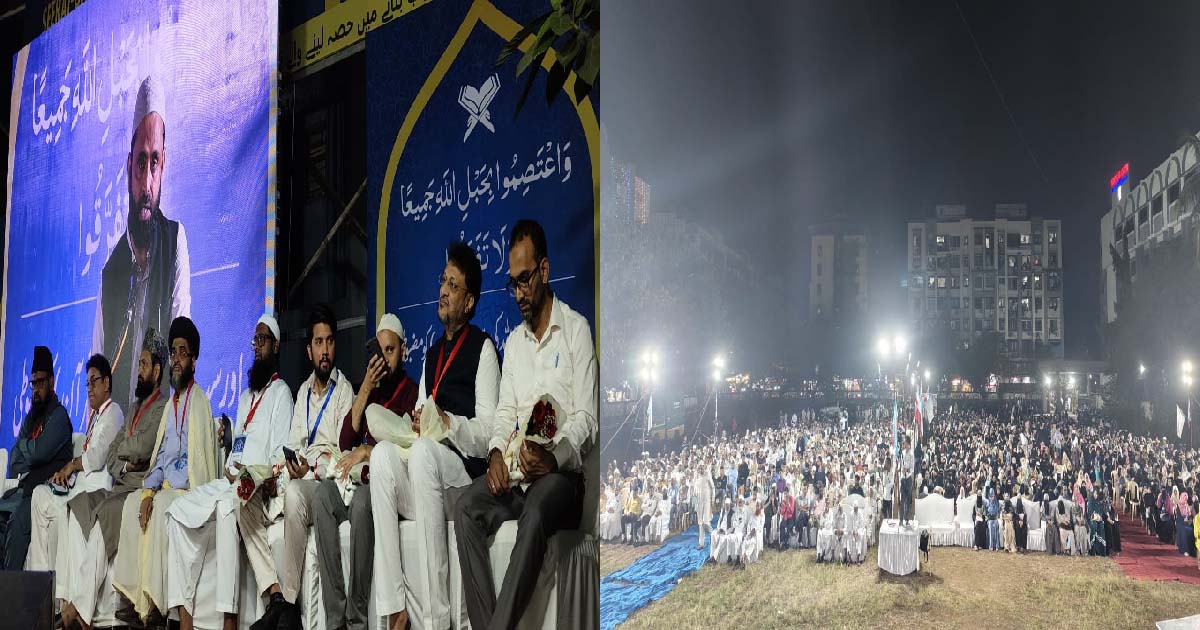National News
Now Firoz Shah Fort and Chor Kuan will be made encroachment free in Sambhal, know the action of DM-SP

Sambhal: The work on the plan to preserve the heritage sites of ancient and religious importance by the administration in Sambhal, Uttar Pradesh has intensified. After the violence that broke out during the Shahi Jama Masjid survey on November 24, the administrative team is continuously engaged in identifying such sites. Excavations have been done at many places in Sambhal. A large number of sites of historical and religious importance have been found in it. After finding a historical stepwell in Mohalla Laxman Ganj, a plan has been prepared to free Firozshah Fort and Chor Kuan from encroachment. Sambhal DM Dr. Rajendra Pansiya and SP KK Vishnoi inspected Firozshah Fort, Kshemnath Tirtha Neemsar, Tota-Maina’s grave and Rajput era stepwell Chor Kuan on Wednesday.
Sambhal was called Kalki city
Sambhal DM Rajendra Pansia said about Sambhal that it is called the city of tomorrow i.e. Kalki Nagari. He clearly said that if we do not preserve history, it will leave us. Both the officers first inspected the Firoz Shah Fort. It is a building protected by ASI. It was constructed between the years 1656 and 1659.
The problem of encroachment has become severe in this fort spread over 1.2 hectares. The main signboard has been closed with a boundary wall by making illegal construction at the entry gate of the fort. The DM expressed displeasure over this. He ordered to demolish the kutcha wall immediately.
questions raised on negligence
During the inspection, the DM also raised questions on the negligence of the Archaeological Department and ordered action. Along with this, the DM instructed the Lekhpals to measure the protected land of the fort. He also issued instructions to the Pradhan to clean the well built near the fort. The DM also saw the tunnel built in the fort and the room of Chand Suraj. Both the officers instructed the officials to preserve them and make the area encroachment free.
Inspection of Kshemanath shrine
After this, the DM inspected Kshemnath Teerth Neemsar. There, after 40 years, the renovation work of the awakened well has started. Seeing the 10 to 12 feet deep water, the DM called it an awakened well. It is very important from the religious and water conservation point of view. After this, the DM and SP also inspected the grave of Tota-Maina and the Rajput era stepwell Chor Kuan.
Why was it named Chor Kuan?
The DM saw the unique architecture and secret rooms of the stepwell. He called it a historical heritage. He expressed surprise and asked why the Rajput stepwell was named Chor Kuan? The DM said that the name and glorious history of this stepwell will be brought back. He said that its excavation will be done under the supervision of the State Archaeological Department and ASI.
The DM said that it will be freed from encroachment and given the status of protected heritage. It is being claimed about this stepwell that it was built during the reign of Rajput ruler Prithviraj Chauhan.
The fort is 356 years old
Sambhal’s Firoz Shah Fort is a repository of ancient heritage. It is a glorious symbol of the Mughal era. Firoz Shah Fort is famous for its historicity and grandeur. This fort is located about five kilometers from Sambhal on the banks of the Sot River. It was constructed between 1656 and 1659 on the orders of Mughal emperor Shah Jahan for his chief courtier Syed Firoz.
To strengthen his hold on his throne in Delhi, Shah Jahan handed over the estate of Sambhal to Syed Firoz. Chand Mahal and Suraj Mahal were constructed in this fort. Its beauty presents an excellent example of Mughal architecture. This fort has turned into ruins at present.
Mumbai Press Exclusive News
“Seerat-un-Nabi (PBUH) and Unity of the Ummah” conference at Mira Road… More than 3500 participants attended this historic conference

Mira Road: A grand and grand conference titled “Seerat-un-Nabi ﷺ and Unity of the Ummah” organized by Jamaat-e-Islami Hind Mira Road was held at NH School Ground, in which the extraordinary participation of more than 3500 men and women made it a historic gathering.
The opening remarks were delivered by Dr. Tariq Shah (Ameer of Local Jamaat-e-Islami Hind, Mira Road) and it was made clear that the main objective of the conference is to promote unity and solidarity in the Muslim Ummah, to build Islamic character in the light of the Seerat-e-Nabvi ﷺ, and to strengthen the struggle for the revival of the Prophetic mission in the society. He also explained the activities, subsidiary organizations and projects of Jamaat-e-Islami. He said that the main objective of this gathering is to bring the Ummah together at one center in the light of the Seerat-e-Nabvi ﷺ and to strengthen the struggle for positive change in the society.
The presidential address was delivered by Maulana Waliullah Saeedi Falahi, Vice President of Jamaat-e-Islami Hind, which was greatly appreciated by the audience. Maulana said in his address that the success of the Ummah lies in the complete adherence to the Seerat-e-Prophet (peace be upon him). If Muslims adopt the morals, justice, and wisdom of the Holy Prophet (peace be upon him), then society can become a cradle of peace and justice. He guided in the light of the Seerat-e-Prophet (peace be upon him) and said that religion commands us to be just, honest, and serve the people, and these qualities form the foundation of a strong nation and a developed society.
The general address was delivered by Ameer-e-Halqa of Jamaat-e-Islami Hind Maharashtra Maulana Ilyas Khan Falahi, Nazim City Jamaat-e-Islami Hind Mumbai Mr. Rashid Khan, Mohtamam Darul Uloom Azizia Maulana Abdullah Qasmi, Imam Haideri Mosque Syed Hassan Imam, and political leader Syed Muzaffar Hussain.
Other speakers shed comprehensive light on important topics such as the role of Muslims in the development and progress of the country, the strength of the family system, the active role of women in Islamic movements, and the mission of the Holy Prophet (peace and blessings of Allah be upon him)—propagating the message of religion and forming the best moral character. Finally, the conference in-charge Atta-ul-Haq specially thanked all the participants, social and religious leaders, the public, and the organizational departments—SIO, GIO, and Youth Movement—for their services.
The gathering ended with a heartfelt prayer by Maulana Zakaria Sahib.
National News
Virat Kohli and Rohit Sharma show will continue: Dale Steyn

New Delhi, Dec 2: Former South Africa cricketer Dale Steyn believes Virat Kohli and Rohit Sharma’s show will continue in the ongoing ODI series ahead of the second ODI on Wednesday in Raipur.
At the JSCA International Stadium Complex in Ranchi, India overcame a scare and easily defeated South Africa in a closely contested match to win the first ODI by 17 runs and take a 1-0 lead in the three-match series.
Speaking on the expectations from the second ODI, JioStar expert Dale Steyn said: “I think the Virat Kohli and Rohit Sharma show will continue. I’m eager to see which fast bowlers, and which spinners, come out and do something interesting.”
India put up a commanding first innings total, driven by a brilliant century from Virat Kohli and critical fifties from Rohit Sharma and K.L. Rahul following the early setback as India amassed a mammoth 398/8 in 50 overs. Later in the game, Kuldeep Yadav 4/68 and Harshit Rana 3/65 helped India beat the visitors by 17 runs.
The experienced pair of Rohit and Virat stitched together a fluent 136-run stand, taking the pressure off after the early setback. Rohit reached a brisk 57 off 51 balls and broke Shahid Afridi’s long-standing record for most ODI sixes before Marco Jansen trapped him lbw.
In the meantime, Kohli carried on unhindered, reaching his 83rd international century and 52nd ODI century. He advanced fast after reaching three figures, taking on Prenelan Subrayen with two fours and two sixes.
Rahul offered excellent support with a well-paced 60, adding 76 important runs with Kohli. After Kohli’s removal for 135, Rahul and Ravindra Jadeja pushed India towards a huge finish with a 65-run partnership. But a late mini-collapse that included wickets from Corbin Bosch and Jansen limited India to 349/8.
Steyn emphasised the importance of wicket-keeper batter Quinton de Kock’s role and expects a big knock from him. “It’s been a batter’s paradise so far, so which bowlers will step up and really perform in the second ODI? Quinton de Kock didn’t score any runs in the first ODI, but I feel like he has a point to prove. He’s someone South Africa will lean on to score big for them.”
Crime
Navi Mumbai Crime: Anti-Human Trafficking Unit Busts Prostitution Racket At Vashi Spa; 6 Women Rescued, Manager Arrested

Navi Mumbai, Dec 02: Navi Mumbai Police’s Anti-Human Trafficking Unit (AHTU) on Saturday busted a prostitution racket operating under the guise of massage services at Arpana’s Salon & Spa in Sector 11, Juhugaon, Vashi, rescuing six women from the premises. The spa’s manager, Asima Robin Ghosh (34), was arrested, while her partner, Noor Alam Shaikh, remains absconding.
According to police, the spa was allegedly charging Rs 6,000 per customer and coercing women into prostitution. Acting on specific information, the AHTU deployed a decoy customer on November 30 to verify the operations.
Once the illegal activities were confirmed, a team led by Senior Police Inspector Prithviraj Ghorpade, along with API Yogesh Deshmukh, PSI Sarita Gude and other personnel, conducted a swift raid on the establishment.
During the operation, officers found six women who revealed they were being forced into sex work under the guise of providing massage services. Based on their statements, police registered a case against Ghosh and Shaikh under BNS Section 143(3) and Sections 3, 4, 7 and 7(1) of the Immoral Traffic (Prevention) Act, 1956.
“We will continue to crack down on establishments exploiting women under the pretext of spa and massage services. Action will be taken against all those involved, including the absconding accused,” said Senior PI Prithviraj Ghorpade.
Ghosh has been remanded to police custody till December 4, and the search for Noor Alam Shaikh is underway, officials added.
-

 Crime3 years ago
Crime3 years agoClass 10 student jumps to death in Jaipur
-

 Maharashtra1 year ago
Maharashtra1 year agoMumbai Local Train Update: Central Railway’s New Timetable Comes Into Effect; Check Full List Of Revised Timings & Stations
-

 Maharashtra1 year ago
Maharashtra1 year agoMumbai To Go Toll-Free Tonight! Maharashtra Govt Announces Complete Toll Waiver For Light Motor Vehicles At All 5 Entry Points Of City
-

 Maharashtra1 year ago
Maharashtra1 year agoFalse photo of Imtiaz Jaleel’s rally, exposing the fooling conspiracy
-

 National News1 year ago
National News1 year agoMinistry of Railways rolls out Special Drive 4.0 with focus on digitisation, cleanliness, inclusiveness and grievance redressal
-

 Maharashtra1 year ago
Maharashtra1 year agoMaharashtra Elections 2024: Mumbai Metro & BEST Services Extended Till Midnight On Voting Day
-

 National News1 year ago
National News1 year agoJ&K: 4 Jawans Killed, 28 Injured After Bus Carrying BSF Personnel For Poll Duty Falls Into Gorge In Budgam; Terrifying Visuals Surface
-

 Crime1 year ago
Crime1 year agoBaba Siddique Murder: Mumbai Police Unable To Get Lawrence Bishnoi Custody Due To Home Ministry Order, Says Report












